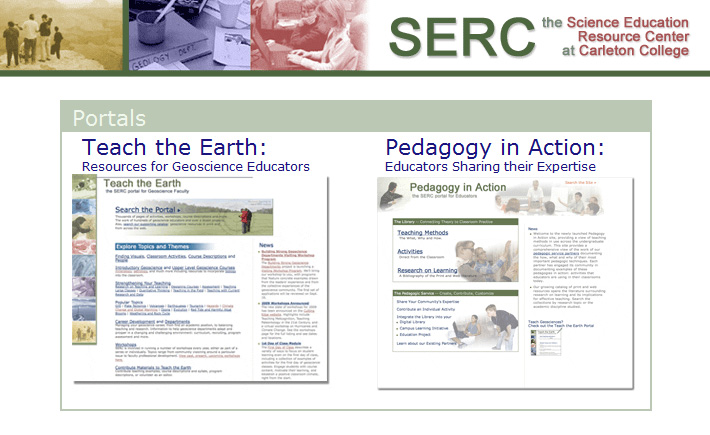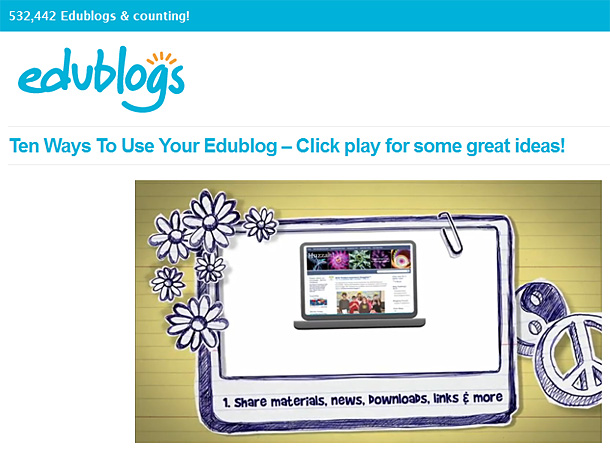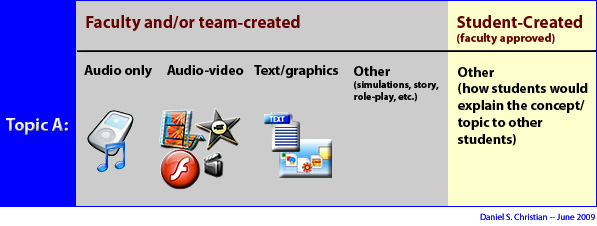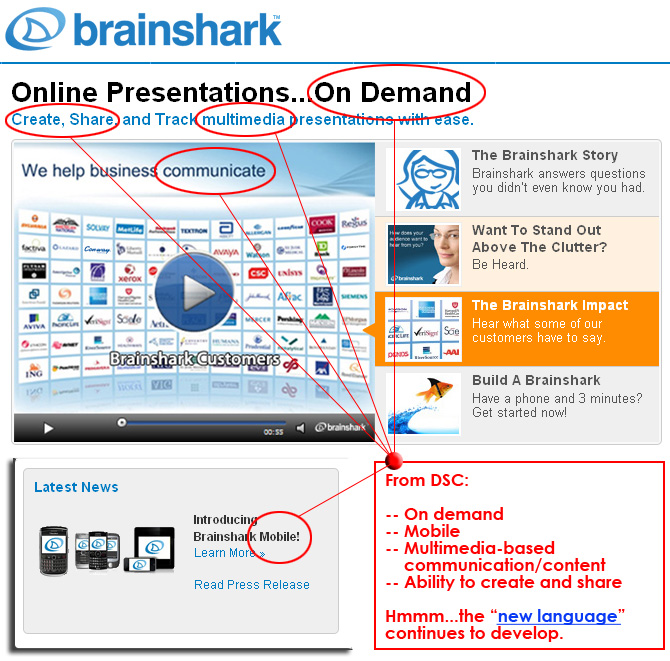Integrating social media into online education — from Faculty Focus by John Orlando
The Periodic Table of Videos — University of Nottingham
Interactive Periodic Table — from touchspin.com
Periodic Table of Elements — from ptable.com
From DSC — Here’s an oldie but goodie:
Vodcasting: The Vod Couple — from The Journal by Dian Schaffhauser — back from 08/01/09
High school chemistry teachers Aaron Sams and Jonathan Bergmann have overturned conventional classroom instruction by using video podcasts to form the root of a new learning model.
Lecture Capture: Policy and Strategy — University Business by Ellen Ullman
What is happening to the pedagogical process because of lecture capture?
July/August 2010 2010
A top ten list for successful online courses – from JOLT by Richard J. Wagner, Jeff P. Vanevenhoven, and James W. Bronson (University of Wisconsin-Whitewater)
Abstract
Many of us have been teaching online courses for several years. In that time we have learned what works and what doesn’t from a mix of hands-on-experience, fellow online faculty, platform specific training, and exposure to pedagogical research. While training and research have their value, we learned the most about preparing an effective online course from personal experience and working with our peers. When asked to prepare a presentation for new online faculty we sat down and pooled our knowledge with respect to course design and course management. The result of this collaborative session was a list of pragmatic practices required for a successful online course. While the list could be longer, and certainly doesn’t include all our favorite practices, we believe we have included those practices that are the key to success.
Keywords: course design, course management, online, module, training
[Original posting via Ray Schroeder]
Learning Beyond Walls: 21 Skype Resources — from Shelly Terrell
9 ways to customize learning experiences – from Faculty Focus
Good Teaching: The Top 10 Requirements — from Faculty Focus by Richard W. Leblanc
From DSC:
We need to deliver content in multiple ways…and let the students select what works best for them. If a particular student doesn’t connect with the information in one way, perhaps he/she will via another method.
For example…drawing from my own collegiate learning experience, I know that I would have benefited greatly from the use of animations in chemistry and organic chemistry…as I struggled all the way through those courses. I never connected with the material.
Also, they say that one really understands something when one has to teach it…so perhaps we could mentor students as they create their own teaching materials. The class of 2011 could start something…and the class of 2012 could tweak it…followed by the class of 2013, etc.
I tried to capture this a while back in the following graphic:
Digital storytelling brings a human connection to online education — from Faculty Focus by Deborah A. Raines
Once upon a time people told stories to share experiences and to teach. With the growing popularity of distance learning modalities educators have been searching for ways to enhance social presence and reflective thinking in the online learning experience. The use of digital storytelling might be a strategy to bring human thought and emotion into online education.
Since pre-historic times, storytelling has been a form of education and social connection. Storytelling allows persons to project their personal characteristics and to present themselves as real people to other participants. The process of creating a story is a mental process which challenges the learner to use critical thinking processes to examine information, question its validity and draw conclusions.
Digital storytelling is the art of telling stories with digital multimedia to share a reflective narrative. Through effective use of perspective, drama, emotion, context and sound, digital storytelling helps people to connect, explore and understand. Digital storytelling can provide a creative ingredient to make the online learning process engaging and can lead to deeper learning (Sharad, 2010).
Digital storytelling presents learners with a challenge to write, understand and communicate in a collaborative, persuasive, accurate and entertaining manner. The steps in creating a digital story as a teaching-learning activity are:
Teaching with Digital Video — from ISTE by Lynn Bell and Dr. Glen L. Bull
With digital video, your students can:
Watch a demonstration of the speed of sound
Analyze classmates’ poetry performances
Create videos that document cultural differences
And the best part is that it’s engaging. Your students are most likely already watching, creating, uploading, and sharing digital video in their spare time, so why not incorporate this tool they already enjoy in the classroom?
Bull and Bell bring together lesson plans, ideas, and resources aligned with the National Educational Technology Standards (NETS) and content-area standards so that you can use digital video in the classroom effectively. The book also includes information on acquiring, creating, and communicating with digital video.
Learn more about this book and topic: listen to an interview with the editors Glen L. Bull and Lynn Bell on ISTE Casts.
Also relevant here:
- Pennsylvania establishes first statewide Digital Learning Library — from eSchoolNew.com by Meris Stansbury
Pa. partners with PBS, Penn State University to give educators free access to standards-aligned digital media content













